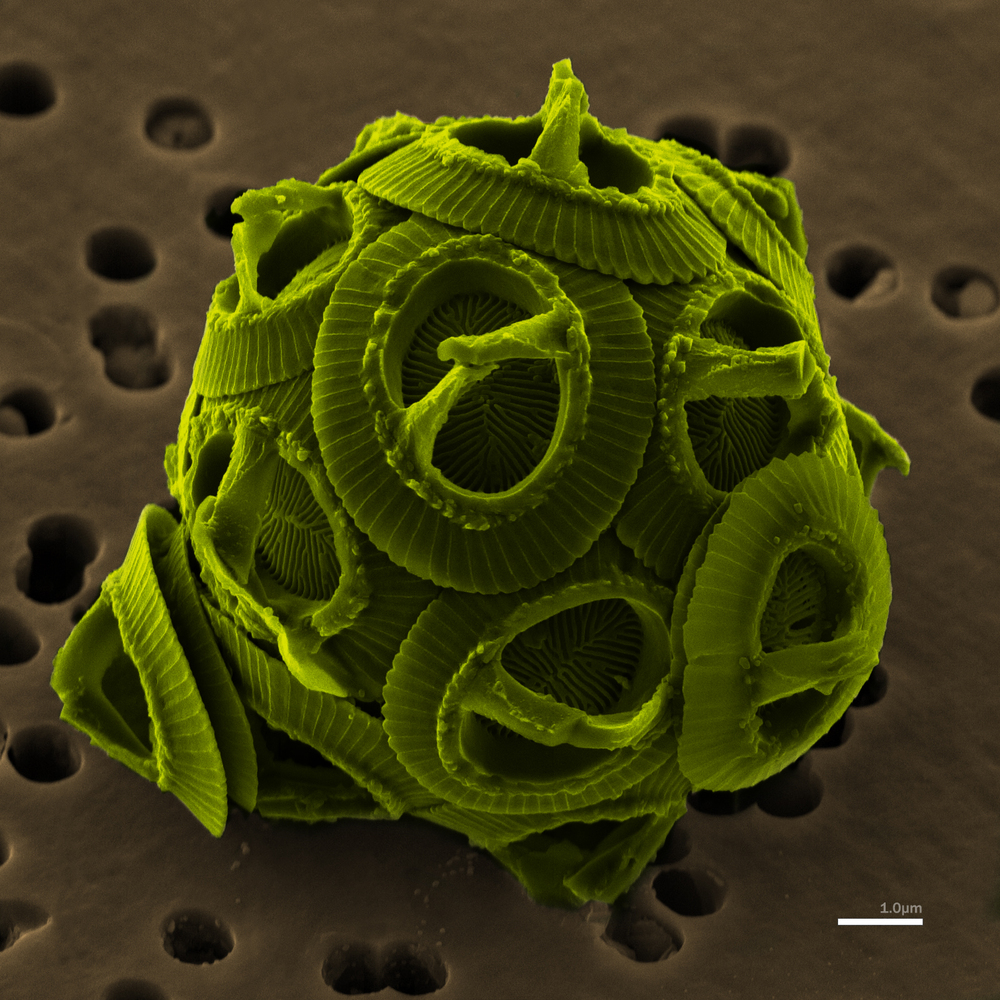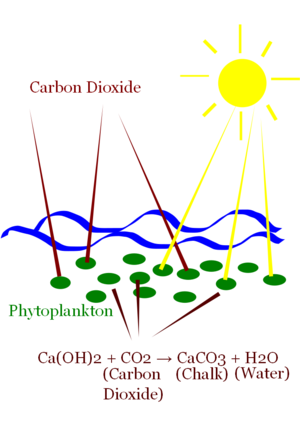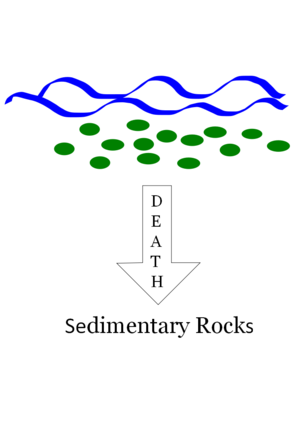Rising ocean acidity may bring microscopic shell production to a halt.
Phytoplankton, single celled marine organisms, can only construct their outer shells when their internal pH is controlled. These organisms form the base of most marine food chains and influence the global carbon cycle by capturing energy from sunlight and combining it with carbon dioxide to create sugars. "They are responsible for capturing as much carbon dioxide as all the rainforests and other terrestrial systems combined" explains Professor Colin Brownlee, an author of the paper published by The Marine Biological Association this week. They also build shells made up of chalk (calcium carbonate), which stores carbon in sedimentary rock when the phytoplankton die and settle on the ocean floor. Disturbing the world's phytoplankton will disrupt these systems.
Professor Brownlee and colleagues reveal how the ocean pH affects the way in which phytoplankton regulate their internal acidity levels. With oceans becoming more acidic due to increasing amounts of dissolved carbon dioxide, this issue demands more urgent attention.
 The phytoplankton in this study make their chalk shells inside the cell in a process known as calcification. They then secrete them onto their outer surface. "Calcification is a process that produces protons as a side product" clarifies Brownlee, "The more protons present, the more acidic the cell becomes". Some of these protons will be used up by the cell as part of photosynthesis, but this varies with light availability. When less light is available, the phytoplankton need an alternative and more consistent way of getting rid of the excess protons.
The phytoplankton in this study make their chalk shells inside the cell in a process known as calcification. They then secrete them onto their outer surface. "Calcification is a process that produces protons as a side product" clarifies Brownlee, "The more protons present, the more acidic the cell becomes". Some of these protons will be used up by the cell as part of photosynthesis, but this varies with light availability. When less light is available, the phytoplankton need an alternative and more consistent way of getting rid of the excess protons.
To achieve this, they use a selective proton channel which allows protons to leave the cell, regulating pH. A surprisingly similar channel is also found in animal cells, which can have a similar problem with pH known as metabolic acidosis. "Many cells have found ways of regulating their internal pH" says Brownlee.
Protons inside the cell flow out of the channel because of a concentration difference. This is similar to opening a window in winter and causing heat to escape because it is colder outside. Proton concentration outside the cell therefore alters the activity of this channel. If the phytoplankton are not able to keep their pH within optimum levels, calcification may shut down. This has an impact on the growth and carbon capture abilities of the phytoplankton, with knock-on effects on carbon cycling.
Previously work focused on how altered ocean acidity could impact on the extracellular chalk armour (coccoliths). This work highlights the importance of understanding what is going on within the cell. Disturbing one aspect of the ocean can have as yet unknown downstream effects. Such knowledge about the consequences of altering sea acidity will help us predict, and hopefully prevent, future problems.
Phytoplankton may be microscopic, but they occur in such vast numbers that they can be seen from space as cloudy white areas. So while phytoplankton are usually out of sight, they should not be out of mind.
 |  |
| 1) Phytoplankton use energy from the sun and carbon dioxide from the atmosphere to capture carbon and convert it into sugars. They also capture carbon by making it part of their shells. | 2) Carbon is stored in sedimentary rock when the phytoplankton die and settle on the ocean floor |
Interview with Professor Colin Brownlee about phytoplankton and ocean acidification.
- Previous Is it Me? Decision Making Babies
- Next Comet Hartley 2









Comments
Add a comment